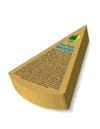Last call...
Due to recent unforeseen circumstances on our end - I am extending our offer one more day. For those of

The Biden Administration’s ambitious climate change initiative and its parallel commitment to creating “green jobs” provide a timely and near perfect moment for us to revisit a topic that has been one of the focal points of our educational mission since Evergreen’s founding in 1985.
Sometime in the late 1980’s I witnessed the most fascinating and entertaining lecture I’ve ever seen. The messenger was W.R.J. “Wink” Sutton, a New Zealand forest economist and mathematician with twinkling eyes and a warm smile who would later become a good friend and a frequent Evergreen contributor.
Unlike most economists who pursue “the dreary science” with charts, graphs and tables, Wink stepped to the podium with a wicker picnic basket under one arm. It held small Zip Lock bags filled with a mish-mash of things: wood shavings, nails, bauxite, flour, corn kernels, potatoes and rice.
Each bag held the exact amount consumed every 24 hours by every person on earth. Simply multiply the amount in each bag by the world’s population and – voila – you knew how much of this or that natural resource the world’s population was consuming every day. There were about five billion people on earth in the late 1980s. This year we will nudge past eight billion.
World consumption reduced to the contents of maybe a dozen plastic bags. This was a magic show complete with visuals that were more instructive and engaging than anything I’ve ever seen in a PowerPoint.
When Wink finished, I rushed forward from the back of the room in hopes of catching him before he left for the airport.. I wanted to know if there was a way we could visualize the amount of wood – not wood chips – consumed daily around the world.

“You mean like a slice of pie,” he asked.
“That would be perfect,” I said.
“I can do that for you,” he replied as he stuffed the plastic bags in his briefcase...
Within a week I had my calculation for the dimensions of a pie-shaped block of wood that represented the average amount of wood consumed every 24 hours by every person on earth. Thus was born, “Our Daily Wood,” a humble wood block so named in biblical reference to “Our Daily Bread.”
Making the blocks was no small chore. Russ McKinley, then timberlands manager for Boise Cascade in southern Oregon, volunteered to rough out the blocks and give them their first sanding. Ernie Hinchcliffe, our graphic designer for the last 32 years, figured out how to silk-screen our “Daily Wood” message on the blocks, then hand-sanded and lacquered ever block. I wrote the message.
I have no idea how many blocks we made but it runs into the thousands. In 1998, a lumber broker in Rome ordered 1,000 as Christmas gifts for his customers. We had to get our message translated into Italian, wrap each block in its own gift box, load the boxes on pallets, shrink-wrap the pallets and truck them to Seattle where they were loaded on a ship that passed through the Panama Canal on its way across the Atlantic.

This a picture of the graphic representation of “Our Daily Wood” that Ernie drew for us several years ago. You can also find it on Page 161 in my book, First, Put Out the Fire!
We no longer make the blocks because they cost $35 apiece and no one wants to pay that much – even for a handmade, smooth as glass block - but we still get notes from people who see them hanging on walls or sitting on desks and want a copy of the message.
So here it is again – a timely reminder that the Biden Administration’s climate initiative could benefit mightily from encouraging the world to use more wood, not less.
You 100% tax-deductible subscription allows us to continue providing science-based forestry information with the goal of ensuring healthy forests forever.